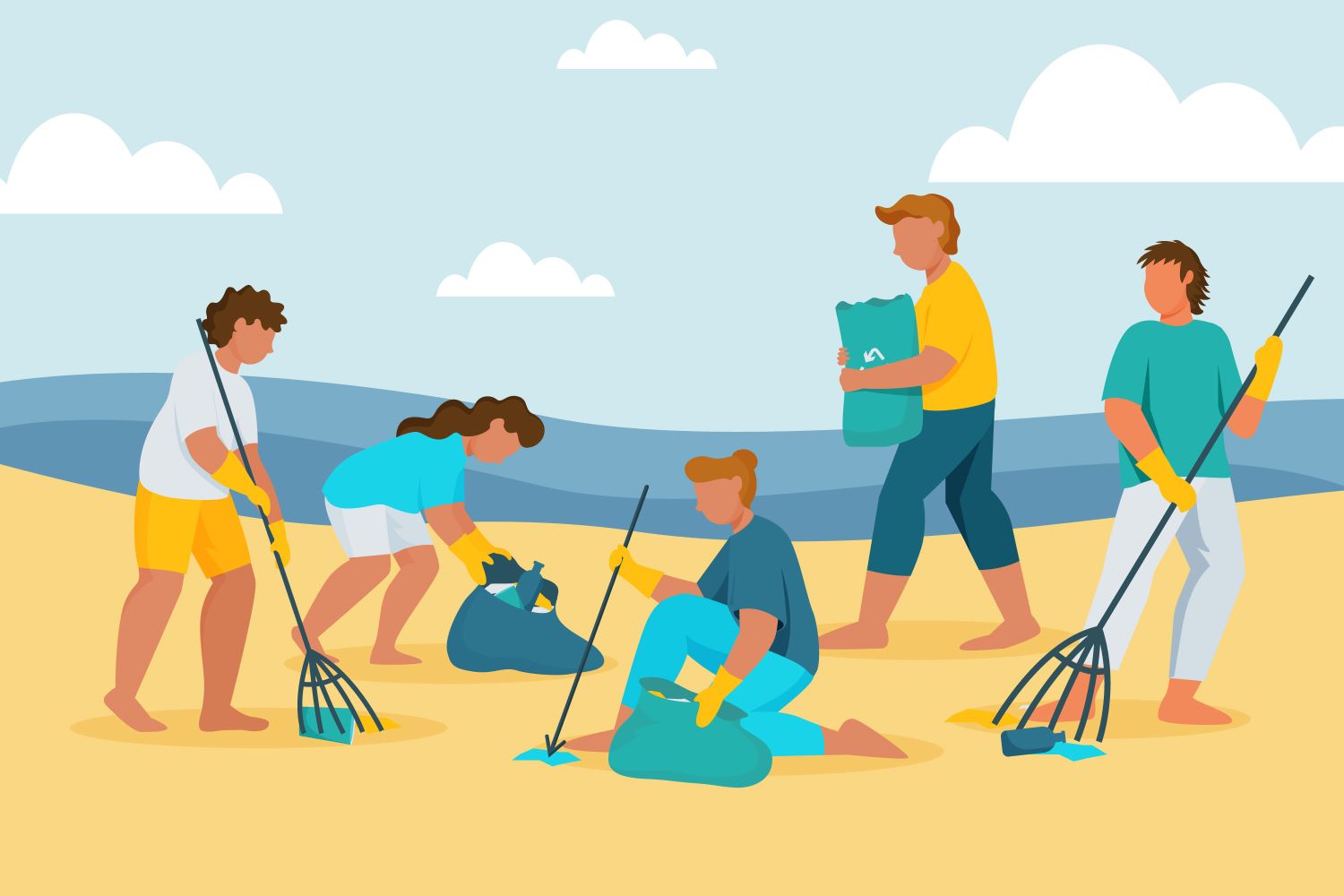Conducting a beach cleanup is a great initiative to protect the environment and ensure the cleanliness of our oceans. Here's a step-by-step guide on how to conduct a beach cleanup:
Plan and organize:
- Determine the date, time, and location for the cleanup. Consider factors like accessibility, availability of facilities, and the level of pollution in the area.
- Contact local authorities, environmental organizations, or community groups to inform them about your cleanup and seek their support or participation.
- Create a team of volunteers who are willing to help and promote the event.
Obtain necessary permissions:
Check with the local authorities or landowners to obtain any required permits or permissions to conduct the cleanup. Ask about any specific guidelines or restrictions you need to follow during the cleanup.Gather essential supplies:
Arrange necessary cleaning supplies such as gloves, trash bags, buckets, and reusable containers for collecting recyclables.Consider providing participants with sunscreen, hats, and reusable water bottles to stay hydrated.Promote the event:
Advertise the cleanup through social media platforms, community bulletin boards, local newspapers, and online event listings.Emphasize the importance of the cleanup, its impact on the environment, and the need for community involvement.Conduct the cleanup:
- Gather all participants at the designated meeting point and provide them with a brief orientation on safety guidelines, waste segregation, and the cleanup process.
- Distribute the cleaning supplies to the volunteers and assign specific areas or zones for cleaning to ensure thorough coverage.
- Encourage participants to collect litter, debris, and plastic waste while being mindful of any potentially hazardous items.
- Separate collected waste into different categories, such as recyclables, non-recyclables, and hazardous waste, if applicable.
- Ensure proper disposal of collected waste in designated bins or coordinate with local waste management services for proper disposal or recycling.
- Document and share:
Take photos or videos during the cleanup to document the event and share them on social media or with local news outlets.
Use hashtags or create a dedicated social media campaign to raise awareness about the cleanup and encourage others to get involved.
Follow-up actions:
- Thank the participants and volunteers for their efforts and acknowledge their contributions.
- Share the results of the cleanup, including the amount and type of waste collected, to showcase the impact of the event.
- Encourage participants to continue practicing responsible waste disposal and spread awareness about the importance of keeping beaches clean.
- Remember, beach cleanups are ongoing efforts, and it's essential to encourage sustainable practices and create long-term awareness to prevent pollution and protect our coastlines.
